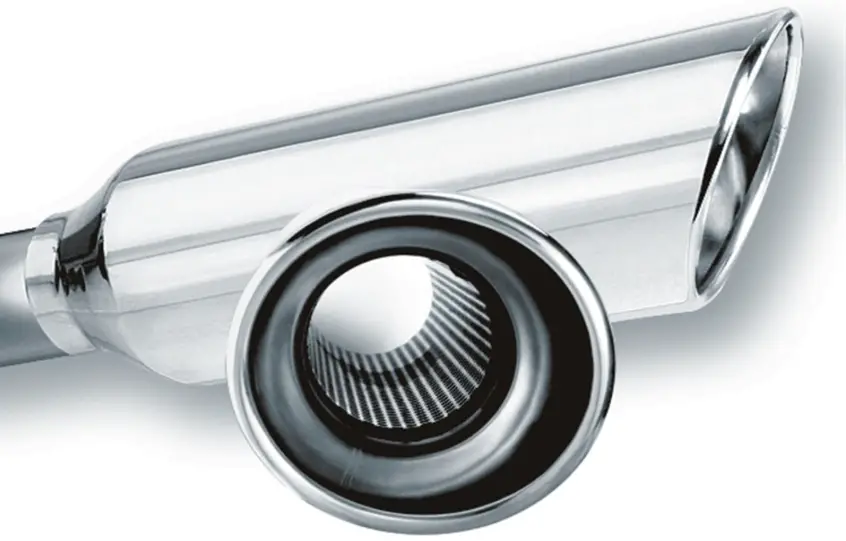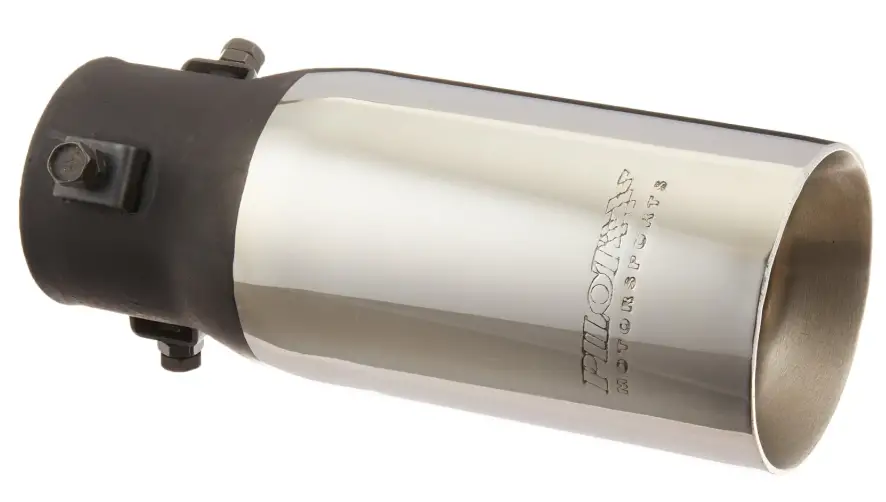When it comes to customizing your vehicle’s exhaust system, choosing between a resonated and non-resonated exhaust tip can significantly impact both the sound and performance of your car. Understanding the differences between these two options is crucial for making an informed decision that aligns with your preferences and driving needs.
Contents
What Is a Resonated Exhaust Tip?
A resonated exhaust tip incorporates an internal resonator designed to modify the sound produced by the exhaust system. This component helps in reducing certain frequencies, particularly those that can cause unwanted drone or harshness, resulting in a smoother and more refined exhaust note.
Key Features of Resonated Exhaust Tips
- Sound Modulation: Reduces drone and harsh frequencies, providing a deeper and more refined exhaust tone.
- Construction: Typically features a perforated tube or internal baffles that allow sound waves to cancel out specific frequencies.
- Material: Made from high-quality stainless steel to withstand heat and corrosion.
Pros and Cons
Pros:
- Minimizes cabin drone, enhancing driving comfort.
- Produces a smoother, more refined exhaust note.
- Ideal for daily drivers and long-distance commuters.
Cons:
- May slightly reduce exhaust volume compared to non-resonated tips.
- Can be more expensive due to additional components.

What Is a Non-Resonated Exhaust Tip?
A non-resonated exhaust tip lacks the internal resonator found in resonated tips. This design allows for a more direct flow of exhaust gases, resulting in a louder and more aggressive exhaust sound.
Key Features of Non-Resonated Exhaust Tips
- Sound Output: Delivers a louder and more aggressive exhaust tone.
- Design: Simpler construction without internal sound-modifying components.
- Material: Often made from stainless steel, ensuring durability and resistance to heat.
Pros and Cons
Pros:
- Increases exhaust volume and presence.
- Provides a more aggressive and sporty exhaust note.
- Suitable for performance enthusiasts seeking maximum sound output.
Cons:
- May introduce cabin drone at certain RPMs.
- Can be less comfortable for daily driving due to increased noise levels.
- Potentially more noticeable to law enforcement in noise-sensitive areas.

Sound Comparison: Resonated vs. Non-Resonated
The primary distinction between resonated and non-resonated exhaust tips lies in the sound they produce. Resonated tips aim to refine and mellow the exhaust note, reducing unwanted frequencies and drone. In contrast, non-resonated tips amplify the exhaust sound, delivering a louder and more aggressive tone.
For a practical demonstration, consider watching the following video, which compares the sound profiles of resonated and non-resonated exhaust systems:
Performance Considerations
While the choice between resonated and non-resonated exhaust tips primarily affects sound, there can be subtle differences in performance:
- Resonated Tips: By reducing certain frequencies, they may slightly improve exhaust flow, potentially enhancing throttle response.
- Non-Resonated Tips: Allow for a more direct exhaust flow, which can marginally increase horsepower, especially in high-performance applications.
However, it’s important to note that these differences are generally minimal and may not be noticeable in everyday driving conditions.
Legal and Environmental Considerations
Before upgrading your exhaust tips, it’s essential to consider local noise regulations and environmental standards:
- Noise Regulations: Some regions have strict laws regarding vehicle noise levels. Non-resonated exhaust tips may exceed these limits, leading to potential fines or penalties.
- Emissions Standards: Ensure that any modifications comply with local emissions regulations to avoid legal issues.
Always check with local authorities or consult your vehicle’s manual to ensure compliance with applicable laws.
Choosing the Right Exhaust Tip for Your Vehicle
Selecting between a resonated and non-resonated exhaust tip depends on several factors:
- Driving Habits: If you use your vehicle for daily commuting, a resonated tip may offer a more comfortable driving experience.
- Sound Preference: Consider whether you prefer a refined exhaust note or a louder, more aggressive sound.
- Legal Compliance: Ensure that your choice adheres to local noise and emissions regulations.
By evaluating these factors, you can make an informed decision that aligns with your preferences and requirements.
Frequently Asked Questions
Here are some FAQs about resonated exhaust tip vs non resonated –
1. Do resonated exhaust tips reduce engine performance?
No, resonated exhaust tips are designed to refine sound without significantly affecting engine performance.
2. Can I install a resonated exhaust tip on any vehicle?
Most vehicles can accommodate resonated exhaust tips, but it’s essential to ensure compatibility with your specific make and model.
3. Are non-resonated exhaust tips legal?
The legality of non-resonated exhaust tips varies by region. Always check local noise and emissions regulations before installation.
4. Will installing a resonated exhaust tip void my vehicle’s warranty?
In most cases, installing a resonated exhaust tip does not void the vehicle’s warranty. However, it’s advisable to consult your dealer to confirm.
5. How can I compare the sound of resonated and non-resonated exhaust tips?
Listening to sound comparison videos, like the one provided above, can help you understand the differences in exhaust tones between resonated and non-resonated tips.
Conclusion
In summary, the choice between resonated and non-resonated exhaust tips significantly impacts your vehicle’s sound and driving experience. Resonated tips provide a refined and comfortable ride, ideal for daily driving, while non-resonated tips deliver a louder and more aggressive exhaust note, suited for performance enthusiasts.
Consider your driving habits, sound preferences, and legal considerations when making your decision to ensure the best fit for your vehicle and lifestyle.